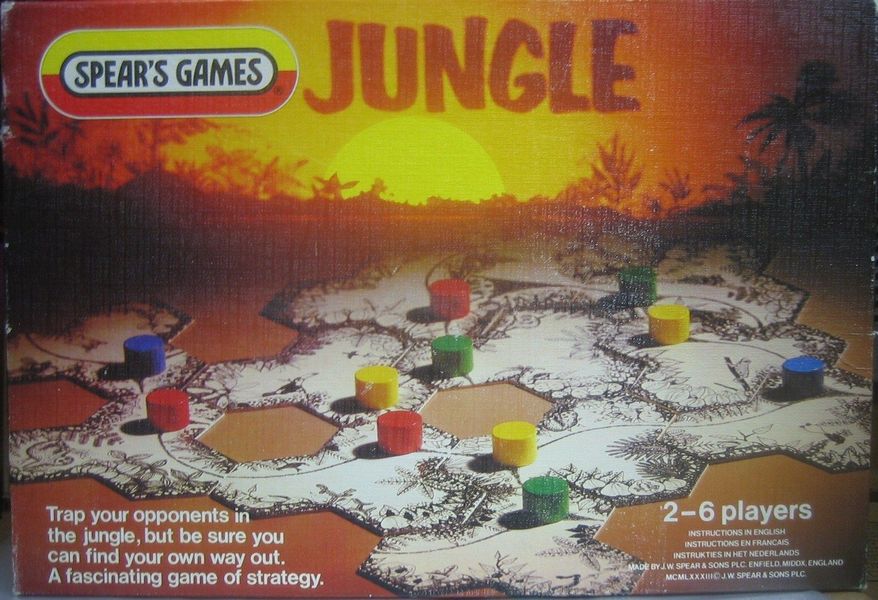Jungle (1981) Board Game
Jungle is a classic board game that was first released in 1981 by Edition Perlhuhn. Designed by Peter Pallat and illustrated by Matthias Wittig, Jungle falls under the categories of Abstract Strategy, Maze, and Territory Building. With a playing time of around 30 minutes and recommended for ages 9 and up, Jungle can accommodate 2 to 6 players, with the best experience being with 3 to 4 players.
Game Components of Jungle
How To Setup Jungle
To set up the game, players start by placing the first tile from the stack in the middle of the table, marking it with their color token. Subsequent players take turns placing tiles from the stack, building the jungle and claiming junctions. This process continues until all tiles are placed, creating a complex maze.
Gameplay Mechanics and Game Objective
Player Experience
Jungle is a game that starts simple but becomes increasingly tactical as players try to navigate their pieces out of the jungle. The game requires strategic thinking to block opponents and create efficient escape paths. As the game progresses, the jungle becomes more complex, and players must adapt to changing circumstances.
Pros
Cons
Personal Thoughts on Jungle
Jungle is ideal for players who enjoy strategic and tactical games. It is particularly suited for those who like puzzle games and are willing to invest time in setting up the board. The game is best for players looking for a challenging yet fun experience that requires careful planning and execution. It is not recommended for those seeking a quick or highly randomized game.
We are supported by our audience. When you purchase through links on our site, we may earn an affiliate commission, at no extra cost for you. Learn more.

